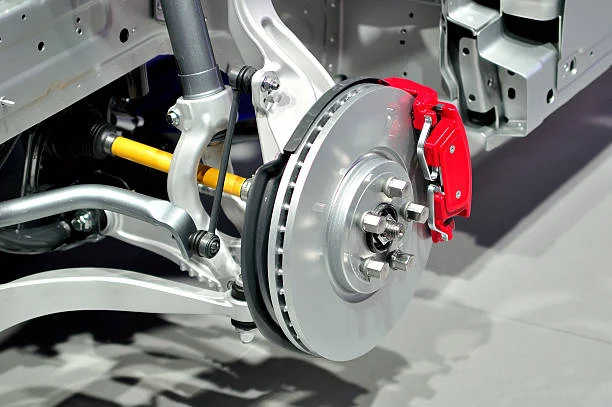
If you’re diving into a brake job, replacing rotors, or inspecting pads, you’ll likely need to remove the brake caliper. But here’s the catch: you don’t want to deal with a mess or introduce air into your brake lines. So how do you remove the brake caliper without losing brake fluid?
This guide explains everything in simple terms. Whether you’re a DIY mechanic or just someone curious about how your car works, this is written from your point of view, addressing your concerns and solving your problems step by step.
Why Brake Fluid Loss Matters
Brake fluid is a closed system — once air or contaminants enter, braking performance can be compromised. Losing fluid also means you’ll have to bleed the brakes afterward, which can be messy, time-consuming, and risky if done incorrectly.
Tools You’ll Need
| Tool | Purpose |
|---|---|
| Socket/ratchet set | To remove caliper mounting bolts |
| Bungee cord or zip ties | To hang the caliper (don’t let it dangle!) |
| Line clamp (optional) | To gently clamp the brake hose |
| Shop towels | To clean up small leaks if needed |
| Protective gloves | For safety and clean handling |
| Penetrating oil | In case bolts are rusted or stuck |
Step-by-Step: How to Remove Brake Caliper Without Losing Fluid
단계 1: Safety First
-
Park your vehicle on a flat surface.
-
Engage the parking brake.
-
Use jack stands — never trust just a jack.
-
Remove the wheel to access the brake caliper.
단계 2: Assess Your Brake Hose
-
If you’re not disconnecting the brake line, you’re already halfway to keeping your fluid.
-
The goal is to leave the brake line attached and flex it as little as possible.
단계 3: Loosen the Caliper Bolts
-
Locate the caliper bolts (usually two).
-
Spray with penetrating oil if rusted.
-
Use the proper size socket and ratchet to remove the bolts.
단계 4: Secure the Caliper
-
Don’t let the caliper hang — it stresses the brake hose.
-
Use a bungee cord or zip tie to hang the caliper from the strut or spring.
-
This ensures the brake line stays intact and you don’t lose fluid.
단계 5: Avoid Unnecessary Movement
-
Gently position the caliper out of the way.
-
Avoid rotating or stretching the brake hose — movement here can cause seepage or damage.
Optional Step: Use a Line Clamp
-
If you’re doing work that may risk stress on the line, you can gently clamp the brake hose with a rubber line clamp.
-
Only use light pressure — you don’t want to damage the hose.
When Will You Lose 브레이크액?
| Scenario | Fluid Loss Risk |
|---|---|
| Caliper removed but hose intact | 아니요 |
| Caliper removed and hose loosened | 예 |
| Hose is stretched or damaged | Possible |
| Caliper detached and left hanging | Risk of damage and fluid loss |
So, as long as you keep the brake hose connected and the caliper supported, you should not lose any fluid.
Pro Tips
-
Don’t open the bleeder valve — unless you’re bleeding the brakes, leave it closed.
-
Clean around the caliper before removal to avoid debris contamination.
-
Inspect the brake hose for cracks or leaks while you’re at it.
-
Mark bolt positions if needed so you can re-torque correctly.
After Reinstallation
Once you’re done with your job (pad replacement, rotor swap, inspection, 등.):
-
Reinstall the caliper in reverse order.
-
Torque the bolts to manufacturer specs.
-
Pump the brake pedal a few times before driving — this resets piston pressure.
-
Check for leaks around the brake hose connection.
-
Test drive slowly to ensure proper braking performance.
자주 묻는 질문
Q: Will I lose brake fluid if I just unbolt the caliper but leave the hose connected?
에이: 아니요. As long as the brake hose stays connected and undamaged, you will not lose fluid.
Q: What if I accidentally twist the brake hose?
에이: Stop, reposition the caliper, and ensure there’s no tension. A twisted hose can weaken or rupture under pressure.
Q: Do I need to bleed the brakes after removing the caliper?
에이: Not if you didn’t open the hydraulic system. If fluid leaks or the line is opened, then yes, you must bleed.
Q: Can I clamp the brake hose to be extra safe?
에이: 예, gently and with a proper line clamp. Don’t use pliers — they can crush the line.
Q: What happens if I let the caliper hang?
에이: It may damage the brake hose, leading to fluid leaks or hose failure. Always support it.
Final Thoughts
Removing a brake caliper without losing fluid is easy if you follow the right steps. The key is not disconnecting the brake hose and making sure the caliper is well supported. Take your time, use the right tools, and prioritize safety — your braking system is one of the most vital parts of your car.
If you’re unsure or feel uncomfortable, it’s always wise to consult a professional. But with a bit of patience and this guide at your side, you can tackle this task like a pro.






















